Abstract
This paper summarizes the currently available information on gasoline exposure to the general population. In general, the largest contribution to the time weighted exposures results from exposures while indoors, which are influenced by the outside air, indoor sources, and attached garages. Personal activities, including refueling and commuting, contribute significantly higher exposures but last for only a small portion of the 24-hr time weighted average. The highest exposed group includes those individuals living near large service stations and those with contaminated water supplies.
Full text
PDF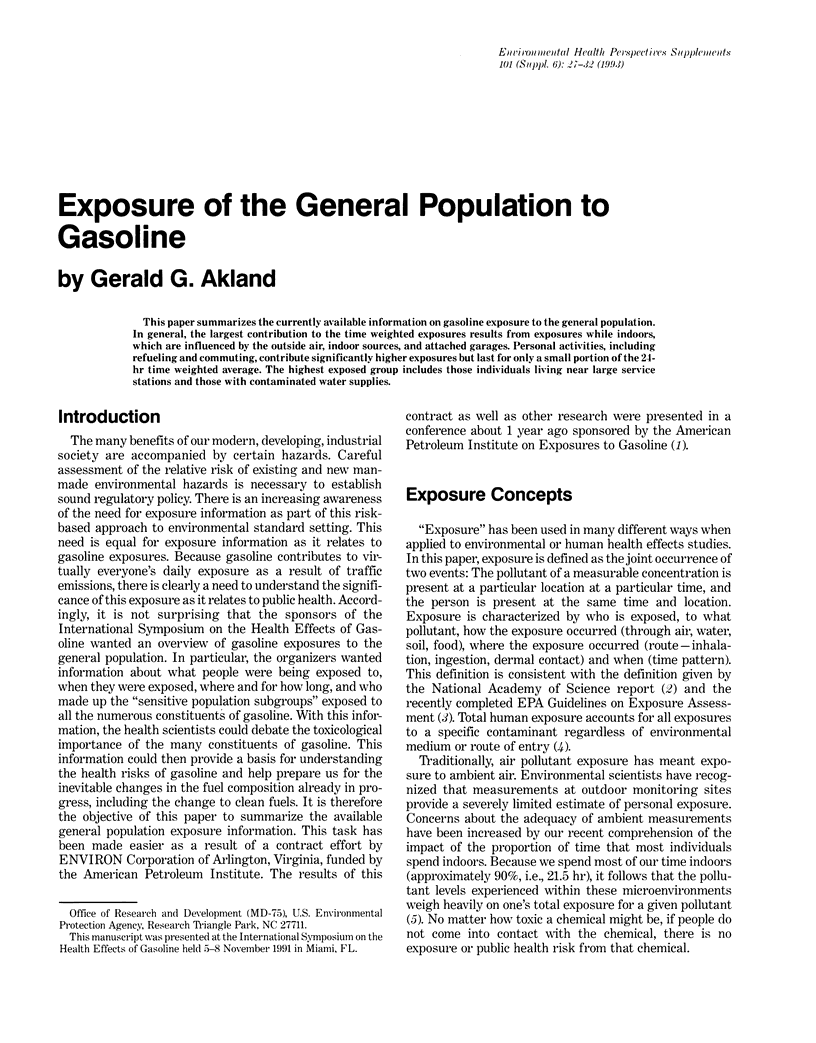
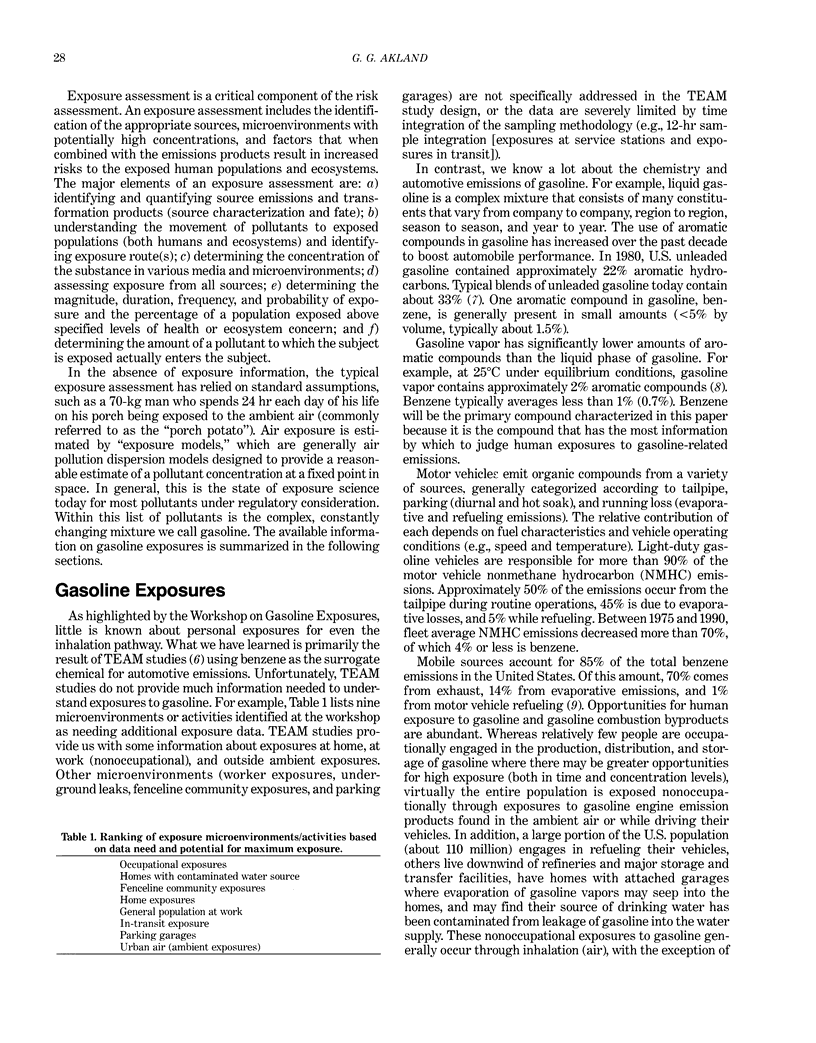
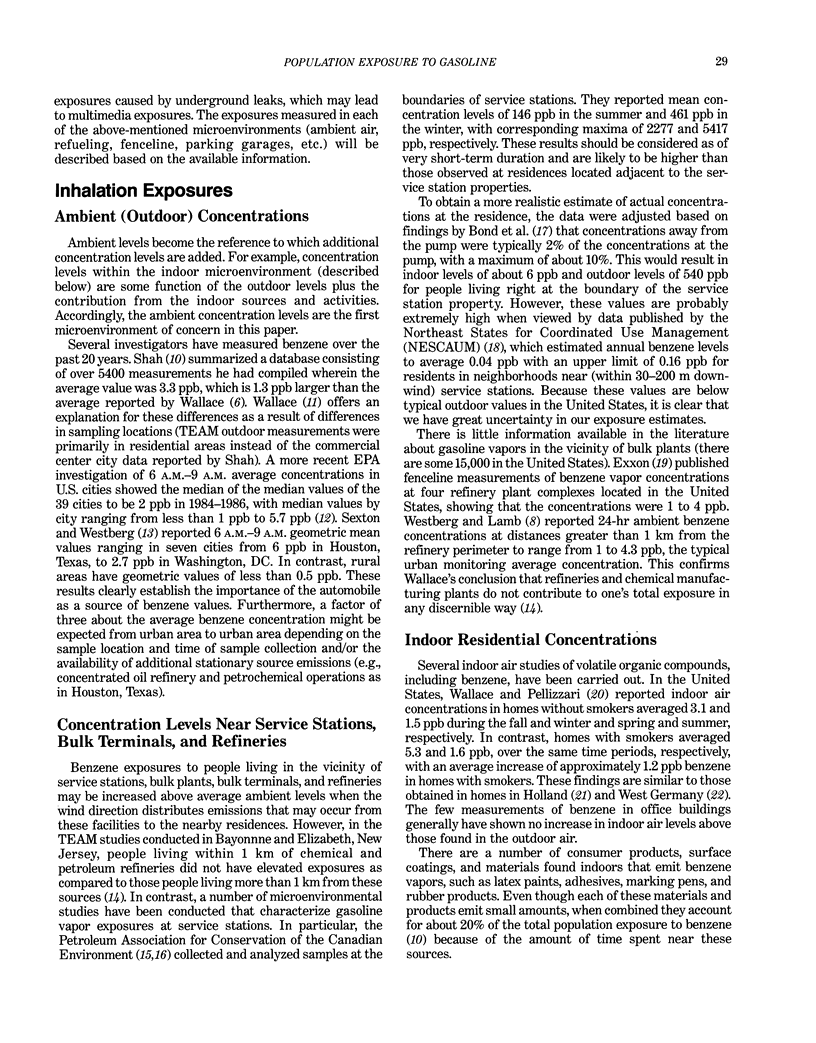
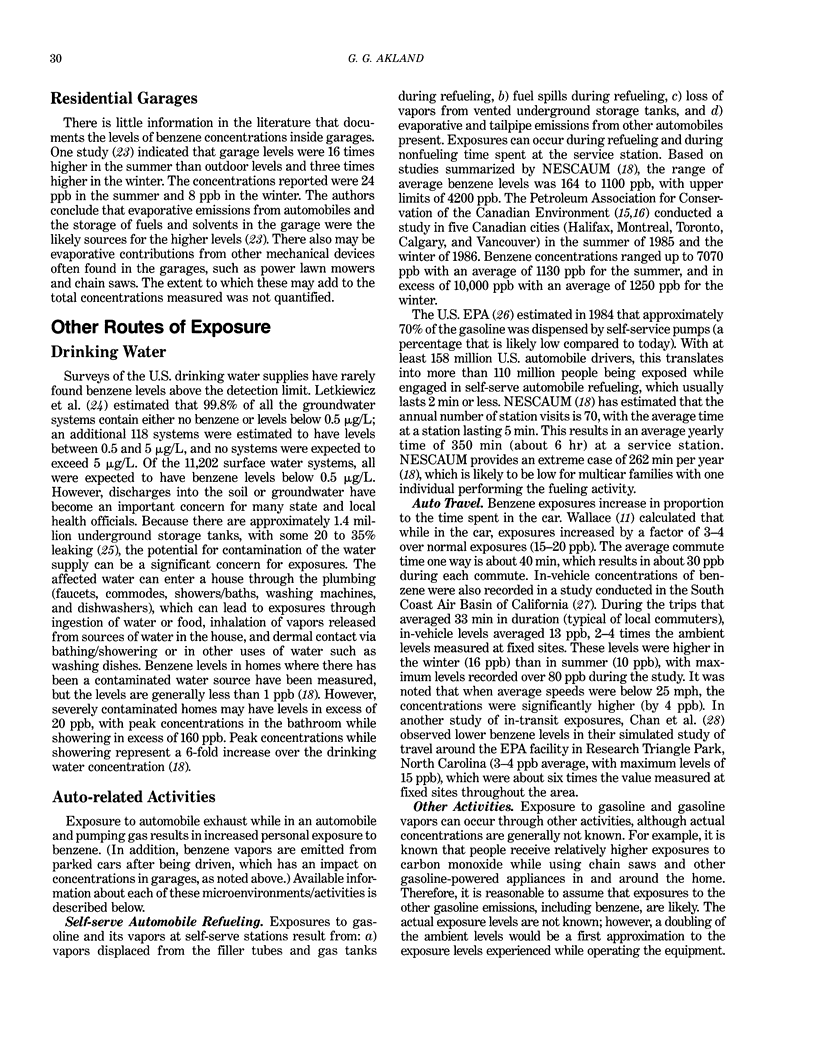
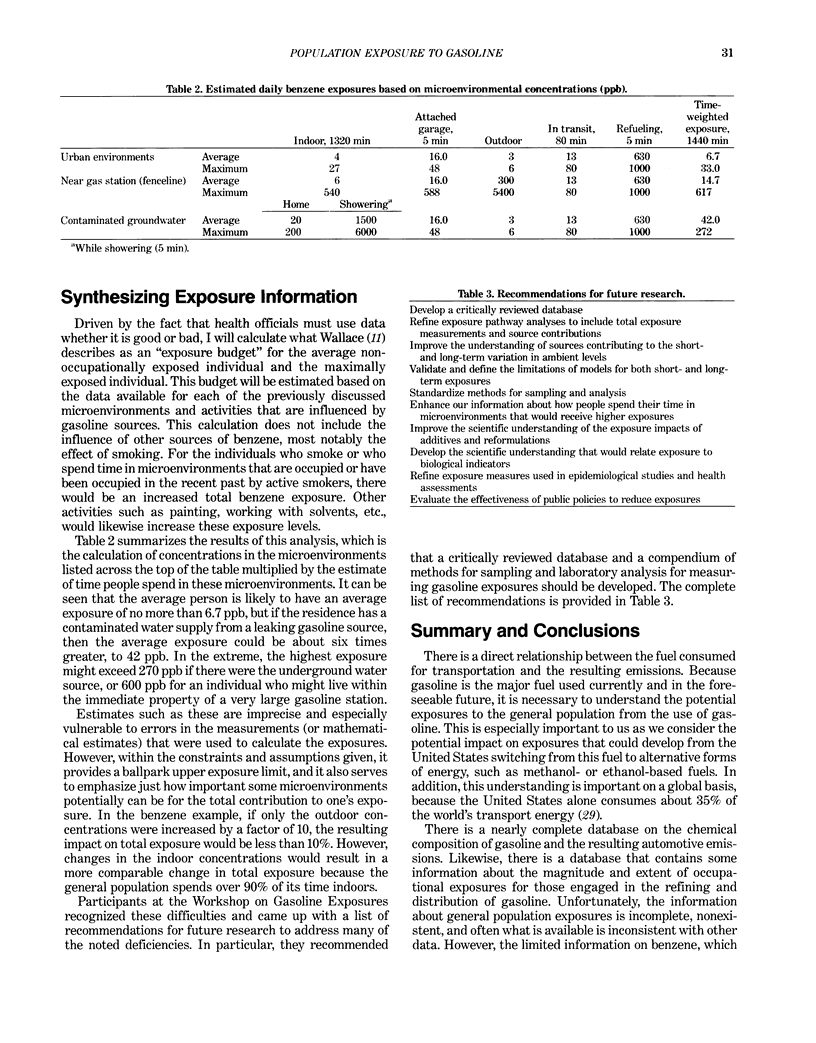

Selected References
These references are in PubMed. This may not be the complete list of references from this article.
- Schwab M., Colome S. D., Spengler J. D., Ryan P. B., Billick I. H. Activity patterns applied to pollutant exposure assessment: data from a personal monitoring study in Los Angeles. Toxicol Ind Health. 1990 Dec;6(6):517–532. [PubMed] [Google Scholar]
- Wallace L. A., Pellizzari E. D. Personal air exposures and breath concentrations of benzene and other volatile hydrocarbons for smokers and nonsmokers. Toxicol Lett. 1987 Jan;35(1):113–116. doi: 10.1016/0378-4274(87)90094-4. [DOI] [PubMed] [Google Scholar]
- Wallace L. A. The exposure of the general population to benzene. Cell Biol Toxicol. 1989 Nov;5(3):297–314. doi: 10.1007/BF01795358. [DOI] [PubMed] [Google Scholar]


